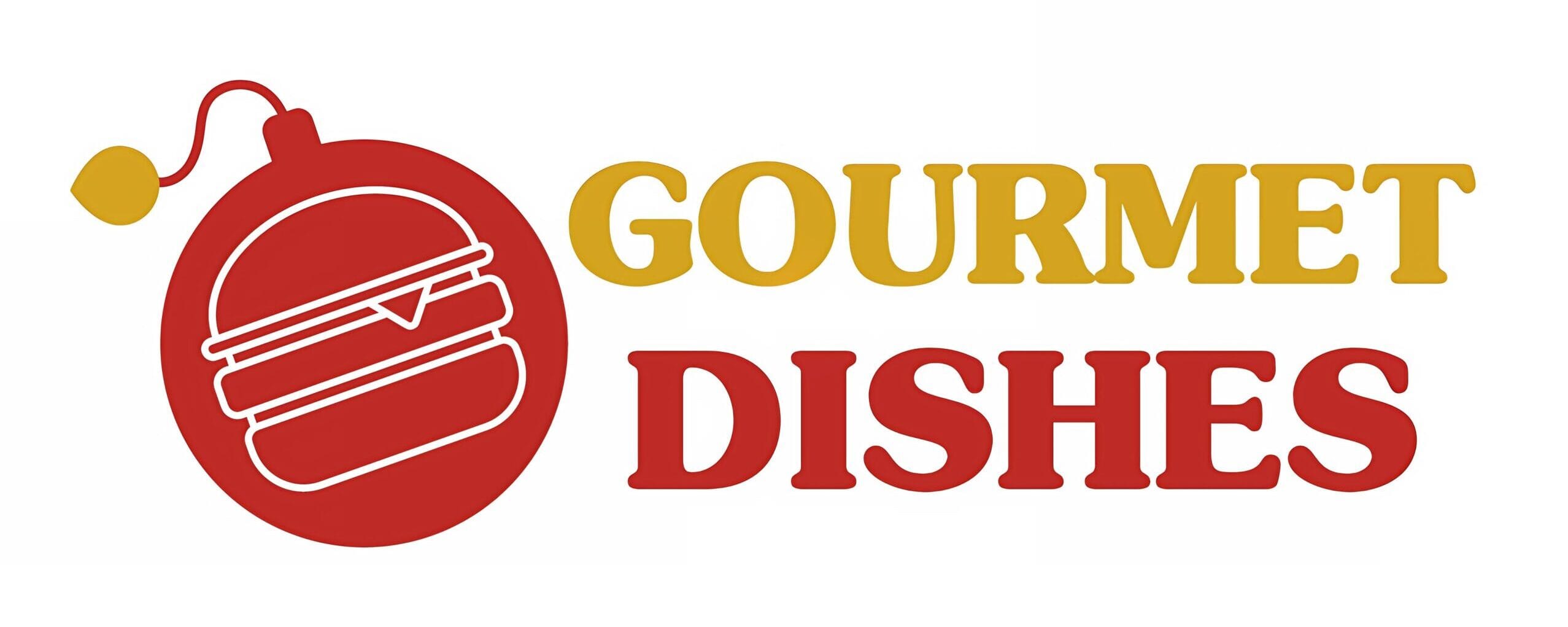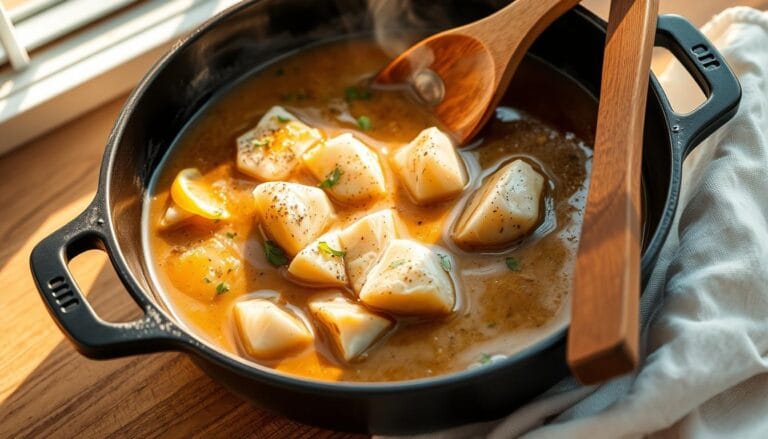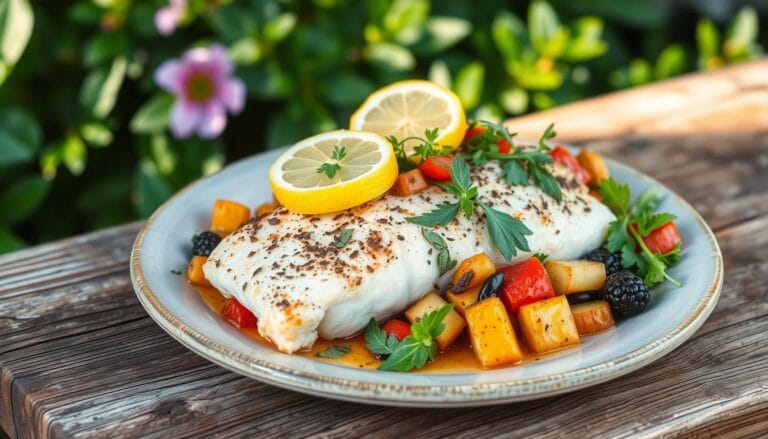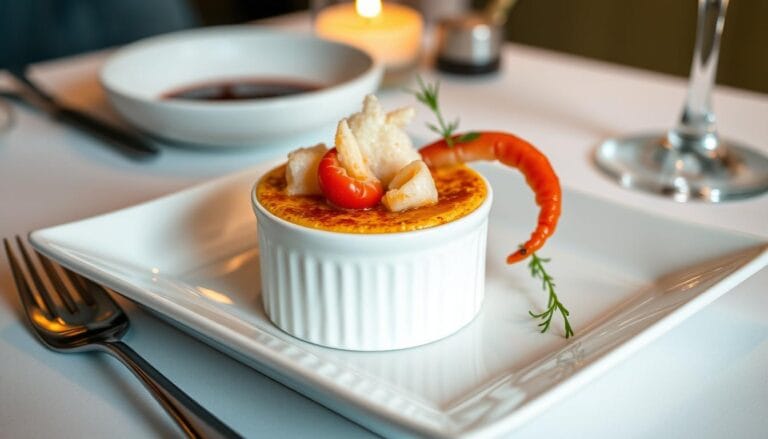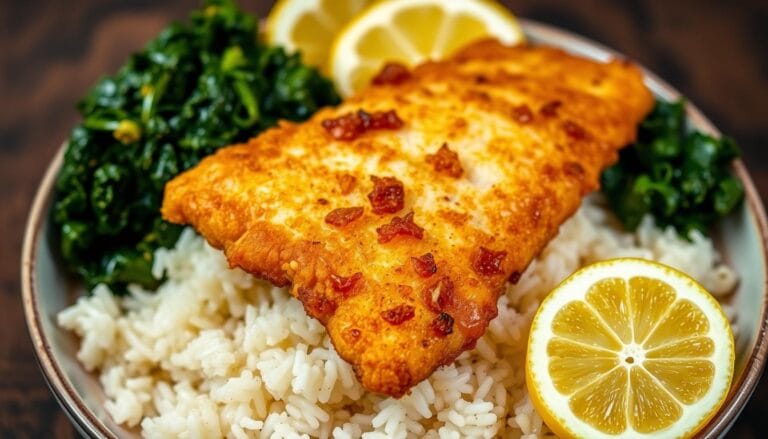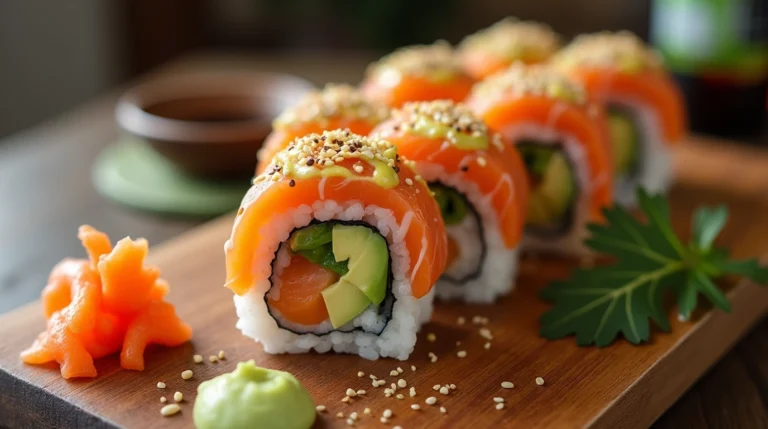Homemade Fish Food Recipes: Nourish Your Aquatic Friends
Do you ever wonder if your fish are truly thriving? Every creature deserves care tailored to its needs—even the tiny swimmers in your tank. Making your own homemade fish food isn’t just practical; it’s a way to deepen that bond. Imagine the joy of knowing exactly what fuels their vibrant colors and active lives.
This guide shows you how to craft meals that match their unique dietary needs. It saves money while boosting their health.
Key Takeaways
- Homemade fish food lets you control ingredients for better fish health.
- Save money by avoiding costly commercial fish food recipe options.
- Customize diets for different species using simple kitchen ingredients.
- Learn storage methods to keep food fresh and safe for aquatic pets.
- Discover how homemade meals can improve fish vitality and longevity.
Why Make Your Own Fish Food at Home
Preparing homemade fish food is more than just a convenience. It’s a way to improve your pet care. By using fresh fish food ingredients, you boost your fish’s health and save money. Here’s why it’s important:
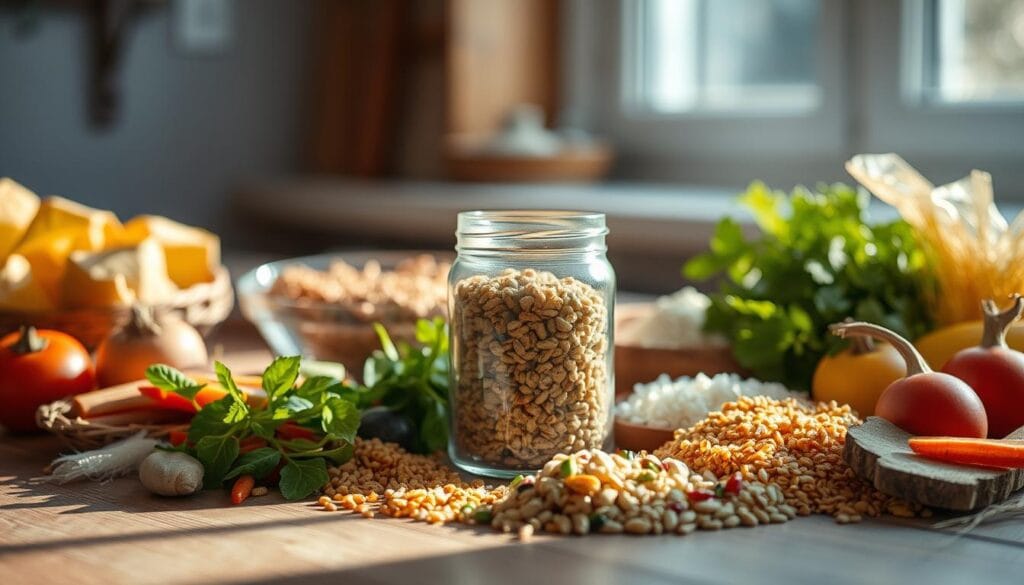
Health Benefits for Your Fish
Fish do best on natural, additive-free diets. Homemade food cuts down on artificial additives found in store-bought pellets. Adding fresh veggies and proteins helps their immunity and color.
A study in Aquaculture Journal found fish on custom diets live 20% longer than those on generic feeds.
Cost-Effectiveness of Homemade Options
Commercial fish food can be expensive over time. A 1lb bag of premium flakes costs $8. But, making a month’s worth at home with peas and brine shrimp can cost less than $5. Here are some tips to save:
- Buy ingredients in bulk (like frozen peas, oats)
- Use kitchen scraps (cooked lentils, spinach)
- Choose less expensive store brands
Control Over Ingredients and Quality
Commercial foods often have fillers like soy or wheat, which some fish can’t digest. Homemade meals let you pick the right nutrients for your fish. For instance:
“Tailoring diets to fish species reduces digestive issues and promotes optimal growth,” says Dr. Linda Carroll, aquatic nutritionist.
Learning to make homemade fish food lets you match your tank’s needs perfectly. You don’t have to make sacrifices.
Understanding Fish Nutritional Requirements
Before making fish homemade food, it’s important to know what your fish need to eat. Different fish need different nutrients based on where they live and how they act. First, figure out if your fish eat meat, plants, or both.
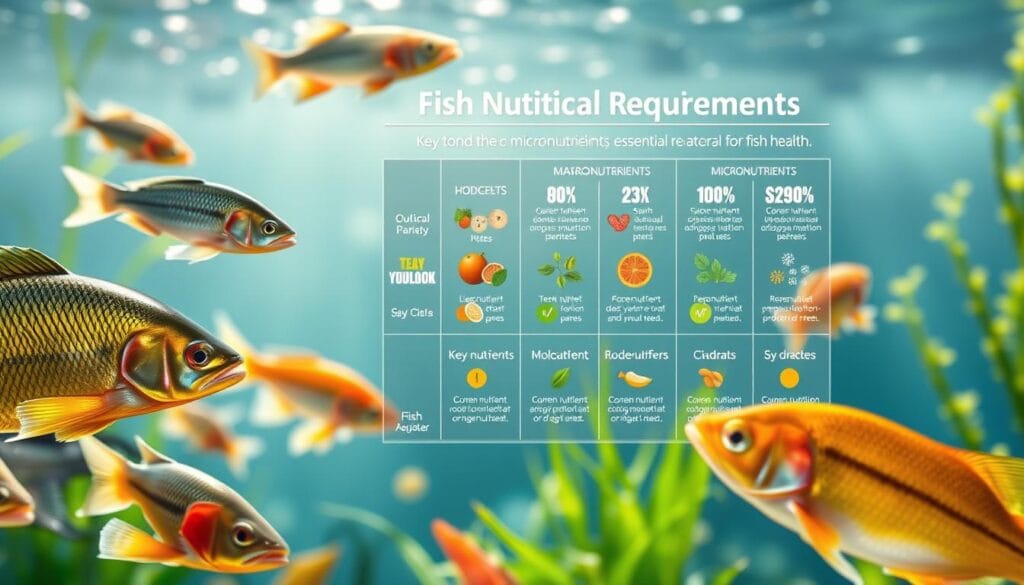
Essential nutrients include proteins (40-60% of diets), healthy fats, and vitamins like A and D. Young fish and those that are breeding need more protein in fish food ingredients. Here’s how to break it down:
| Type | Protein Needs | Key Nutrients |
|---|---|---|
| Carnivorous | 50-60% | Meat-based sources like shrimp, insects |
| Herbivorous | 25-40% | Leafy greens, algae, peas |
| Omnivorous | 35-50% | Mixed plant and animal proteins |
Water temperature and how active your fish are also play a role. Tropical fish might need more carbs for energy. For example,
“Goldfish thrive on vegetable-based diets with 30% protein,”
says the American Aquarium Society. Adjust recipes to match your tank’s conditions.
Always balance fish food ingredients to avoid deficiencies. Too much protein can harm kidneys, while not enough vitamins can weaken immune systems. Next sections will show how to apply this knowledge in fish homemade food recipes tailored to your fish’s needs.
Essential Ingredients for Homemade Fish Food
Choosing the right fish food ingredients is key for your fish’s health. Each part is important for their well-being. Here’s what you should include:
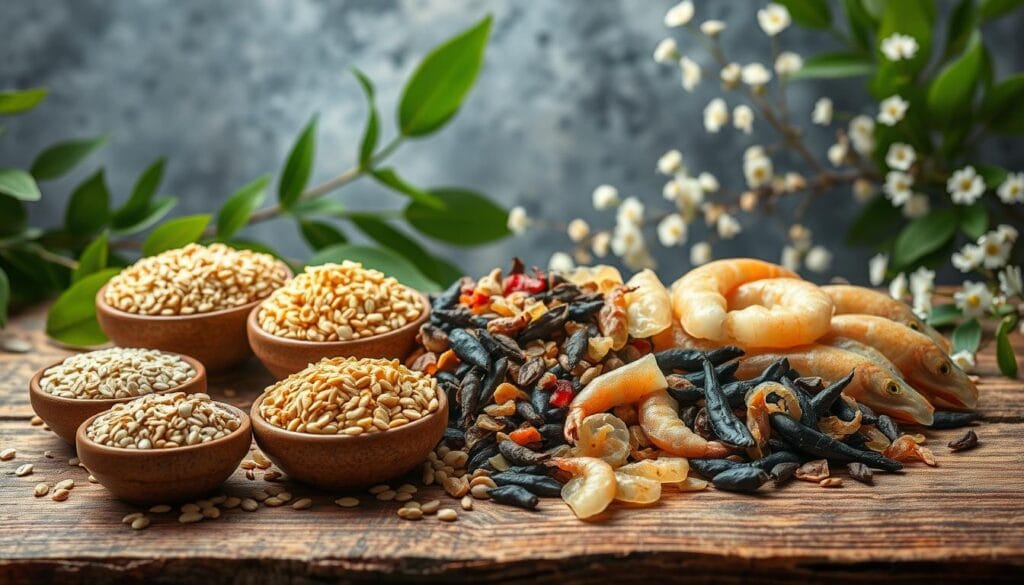
Protein Sources
Protein is vital for growth and muscle. Use:
- Shrimp or cooked white fish (cod, herring)
- Mealworms or crickets for insect-based protein
- Spirulina powder or lentils for plant-based options
Vegetable Components
Leafy greens like spinach and kale add fiber and vitamins. Add peas, carrots, or zucchini. Grate or puree veggies for easier digestion.
Vitamin and Mineral Supplements
Balance nutrition with multivitamin powders made for fish. Add calcium supplements for bone health. Always follow dosage guidelines.
Binding Agents
Mix in gelatin, agar agar, or egg whites to hold ingredients together. These prevent crumbling and keep food intact in water.
Combine these elements into a fish food recipe tailored to your fish’s diet. Adjust ratios based on their species and size. Always store leftovers safely to maintain freshness.
Equipment Needed for Making Fish Food at Home
Making homemade fish food needs a few key tools for good results. Whether you’re new or experienced, the right tools make it easier. Here’s what you need to begin:
Basic Kitchen Supplies
Start with what you likely have at home:
- Food processor or blender for mixing
- Measuring cups and spoons for exact amounts
- Silicone molds or trays for shaping
- Cutting board and knife for chopping
- Non-stick pans for drying or baking
Storage Containers
Good storage keeps your fish homemade food fresh. Use:
- Airtight containers with tight lids
- Ice cube trays for freezing small portions
- Refrigerator-safe containers for short-term use
“Store-bought options like GladWare or Tupperware work well for long-term storage.”
Optional Specialized Equipment
For more complex recipes, consider:
- Food dehydrators (e.g., Excalibur) for drying
- Pellet makers for uniform shapes
- Powder grinders for fine textures
Start with basics like blenders and molds. Even simple tools like a spoon and bowl work for small batches. Focus on quality containers to keep your fish food fresh and safe.
Basic Fish Food Recipe for Beginners
Start your journey into fish food recipe making with this simple blend. This homemade fish food suits most community tank fish. It offers balanced nutrition without complexity. Gather ingredients found in most kitchens.
- 1/2 cup cooked rice (plain, unseasoned)
- 1/4 cup crushed hard-boiled egg whites
- 2 tablespoons spirulina powder
- 1 teaspoon vitamin supplement for fish
- 1/4 cup oat flour (binding agent)
Steps:
- Mix dry ingredients in a bowl until combined.
- Add egg mixture gradually, stirring until dough forms.
- Roll into pea-sized pellets. Let dry on parchment paper for 2 hours.
| Feeding Guidelines |
|---|
| Portion: 1-2 pellets per fish per feeding |
| Frequency: Twice daily for small fish |
Storage: Store dried pellets in an airtight container at room temperature for up to 2 weeks. Refrigerate for longer freshness.
Troubleshooting:
- If dough is too crumbly, add a beaten egg yolk.
Adjust portions based on fish size. Observe your pets’ eating habits to refine the fish food recipe over time. Always prioritize freshness to maintain nutritional value.
Specialized Recipes for Different Fish Species
Every fish has its own needs. Specialized fish food recipes help your pets stay healthy. Change ingredients based on the fish’s behavior and what it likes to eat.
Tropical Freshwater Fish Food
Angelfish and guppies need lots of protein. Here’s a recipe:
- 40% frozen brine shrimp
- 30% boiled peas (de-podded)
- 20% spirulina powder
- 10% crushed flake food
Blend these ingredients into pellets. Serve them fresh or freeze for later.
Goldfish and Koi Specific Recipes
Goldfish and koi prefer low-protein diets. Try this mix:
- 50% cooked lentils
- 30% blanched zucchini
- 15% wheat germ flakes
- 5% dried daphnia
Boil the ingredients, then mash them into dough. Let it harden on a baking sheet.
Bottom Feeder Formulations
Catfish and loaches need sinking food. Mix:
- 60% shrimp shells
- 25% algae wafers
- 15% sunflower seeds
Make dense pellets. Add wheat germ to help them sink faster.
Saltwater Fish Food Recipes
Marine fish need ocean nutrients. For saltwater fish food, use:
- 40% squid cubes
- 30% nori sheets
- 20% marine algae meal
- 10% krill powder
Blend and shape into small cubes. Store them in airtight containers at room temperature.
What to Feed Fish at Home When You Run Out of Commercial Food
When you’re out of commercial fish food, you can use safe household items as a quick fix. Look for fish homemade food basics like soft veggies or boiled egg yolks. It’s important to avoid sudden diet changes but focus on keeping your fish nourished in the short term.
- Boiled spinach or peas (dehydrated or finely chopped)
- Steamed zucchini or squash puree
- Shredded, unseasoned cooked chicken or shrimp
Always make sure to what to feed fish at home is cooked or blanched to lower bacteria risk. For small portions, crumble soft boiled egg yolk into tiny pieces. Never use raw meat or fatty table scraps—they can harm water quality.
“Temporary solutions like steamed vegetables or egg yolk can sustain fish for 1–2 days, but avoid long-term use,” advises the American Aquarium Society.
Stay away from milk products, citrus, or salty snacks. These can stress your fish’s digestive system. Store leftovers in an airtight container and use within 24 hours. Always return to balanced commercial diets as soon as possible.
Creating High-Protein Fish Food Recipe for Growth
Young or breeding fish need high-protein diets for growth. This fish food recipe uses ingredients that help with muscle growth and energy. It’s safe and effective.
Protein-Rich Ingredients
Choose ingredients with at least 40% protein:
- Shrimp (dried or cooked): 60% protein
- Filleted white fish (cod, tilapia): 75% protein
- Insect larvae (black soldier fly: 45% protein)
- Beef heart (cooked and minced): 50% protein
- Commercial fish meal (as a binder)
Mix these fish food ingredients for balanced amino acids.
Preparation Steps
- Grind shrimp and fish into a fine powder with a food processor.
- Mix 2 cups of protein sources with 1/2 cup fish meal for binding.
- Add 1/4 cup water to make a dough-like consistency.
- Roll into small pellets and air-dry for 24 hours.
- Store in an airtight container for up to two weeks.
Feeding Guidelines
Follow this schedule to avoid overfeeding:
| Life Stage | Protein Content | Feeding Frequency |
|---|---|---|
| Fry | 45-50% protein | 3-4 times daily |
| Juveniles | 40-45% protein | 2-3 times daily |
| Adults | 35-40% protein | Once daily |
Watch fish behavior—cut portions if food is left after 2 minutes. Adjust protein levels for breeding fish.
Fish Homemade Food for Fry and Young Fish
Raising fish fry needs the right food for their fast growth. Their small mouths and sensitive stomachs require fish homemade food that’s both fine and full of nutrients. Start with liquid foods for newborns, then move to tiny pellets as they get bigger.
- Liquid diets: Mix egg yolk, infusoria, or micro-worm cultures with water for newborn fry.
- Micro-pellets: Use strained homemade fish food mixtures of brine shrimp, spirulina powder, and egg yolk.
- Transition foods: Crush standard homemade pellets to size as fry grow.
| Development Stage | Food Type | Preparation |
|---|---|---|
| Newborn Fry | Liquid | Blend ingredients to |
| 2-3 Weeks | Micro-pellets | Strain through fine mesh |
| 4+ Weeks | Mini pellets | Use 1/16″ sieve for consistency |
Feed fry 3-5 times a day with an eyedropper or pipette. Watch their growth every week; they should grow fast, doubling in size every 7-10 days. Don’t overfeed—remove any leftover food in 2 minutes. Keep food in ice cube trays for easy serving. Always check the water after feeding.
Make sure their diet is 40-60% protein. Use homemade fish food with fish homemade food supplements like Selcon vitamins. Start moving to regular diets at 6-8 weeks.
Vegetable-Based Fish Food Alternatives
Exploring what to feed fish at home can lead to a nutritious and affordable choice: vegetables. They’re great for herbivorous and omnivorous fish. But, it’s key to prepare them right to keep nutrients in.
Vegetable Preparation Techniques
Blanching makes fibers soft and easier to digest. Boil veggies briefly, then cool them in ice water. Pureeing breaks down cell walls, making nutrients easier to get. Mix purees with oat flour to make pellets. Dehydrating sliced veggies keeps them fresh for later.
Best Vegetables for Fish Nutrition
Spinach is full of iron and vitamins, but blanch it first to remove toxins. Peas are good for fiber and protein, use frozen or fresh and peel them for better digestion. Zucchini adds vitamins and moisture when diced finely. Carrots are rich in beta-carotene, but grate them to avoid choking. Always chop veggies to fit your fish’s mouth size.
- Spinach: Blanch to remove toxins, then blend into pellets.
- Peas: Steam lightly before mashing into gelatin-based recipes.
- Zucchini: Dehydrate slices for a crunchy treat or mash into wet mixes.
- Carrots: Grate finely and mix with protein-rich ingredients like tofu.
Vegetables are great, but they might not have enough protein. Mix them with algae or insects for a balanced diet. Always add veggies slowly to prevent digestive problems.
How to Store Your Homemade Fish Food
Keeping homemade fish food fresh is key. It helps keep nutrients in and prevents spoilage. Here’s how to keep your fish food fresh and safe for your pets.
Refrigeration Methods
Use airtight containers like Tupperware or glass jars for storage. Place them in the fridge at 34–38°F (1–3°C). Make sure to label them with the date.
Use the food within 1–2 weeks to avoid bacterial growth. This helps keep it fresh for your fish.
Freezing Guidelines
Freeze portions in ice cube trays or silicone molds. This makes it easy to use later. Once frozen, move the cubes to freezer-safe bags.
Seal the bags tightly to prevent freezer burn. Frozen homemade fish food can last up to 3 months. Just thaw a small batch in the fridge overnight before feeding.
Shelf-Life Considerations
Only store dry recipes at room temperature. Look out for mold, sour smells, or clumping. These are signs of spoilage.
If you see any of these, throw out the food. Dried fish homemade food in sealed jars can last 1–2 weeks. This depends on the ingredients used.
Common Mistakes to Avoid When Making Fish Food
“All fish can eat the same food.” This myth ignores species-specific needs. Research dietary requirements before mixing your fish food recipe.
Creatingwhat to feed fish at homeneeds careful attention. These mistakes can harm your fish or make the water dirty:
- Unbalanced ingredients: Too much of one food can lead to deficiencies. Mix proteins (like brine shrimp or peas) with vitamins. Tropical fish need more protein than bottom feeders.
- Incorrect ratios: Too much filler, like flour, can make the water cloudy. Use egg whites as a binder but sparingly.
- Poor storage: Leaving food out can attract bacteria. Store in airtight containers and keep them in the fridge.
- Toxic additives: Avoid using garlic, onions, or spoiled food. Make sure all ingredients are safe for your fish.
- Ignoring species differences: Different fish have different diets. Koi like plants, while bettas need more protein. Always check what’s best for your fish.
Don’t skip research or cut corners. Quality ingredients and proven methods are key. If you’re unsure, ask a vet for advice to keep your fish safe and healthy.
Transitioning Your Fish to Homemade Food
Switching your fish to homemade fish food needs to be done carefully. Sudden changes can stress them out. Follow these steps for a smooth transition and keep them healthy.
Gradual Introduction Methods
Begin by mixing 25% homemade food with commercial pellets for 3 days. Then, increase homemade portions to 50% over the next week. After that, go to 75%, and then 100% homemade. Feed them small portions twice a day to avoid waste.
Monitoring Fish Response
Watch for these signs after each adjustment:
- Healthy response: Active feeding, vibrant color, normal waste.
- Concerning signs: Refusal to eat, faded scales, bloated bellies, or stringy feces.
| Healthy Signs | Problem Signs |
|---|---|
| Normal appetite | Food ignored |
| Clear, firm waste | White, stringy waste |
| Active swimming | Lethargy or hiding |
If fish show discomfort, go back to commercial food and adjust recipes. Use softer ingredients like cooked peas or mashed shrimp to help digestion. Remember, patience is key—most fish adapt in 2-3 weeks. Always put your pets’ well-being first when exploring what to feed fish at home.
Conclusion: Nurturing Your Aquatic Pets with Homemade Nutrition
Homemade fish food is a great way to care for your aquatic pets. You can choose the ingredients, making sure your fish get the best nutrition. This approach saves money and keeps your fish healthy.
Begin with simple recipes for your fish’s type. As you get better, try new ingredients to meet their needs. Always store food right and watch how your fish react. Small changes can make a big difference in their health.
Focus on quality to make sure your fish are happy and healthy. Your hard work will make their environment better and strengthen your bond with them.
